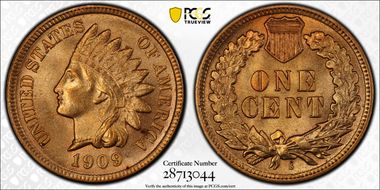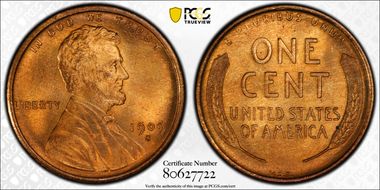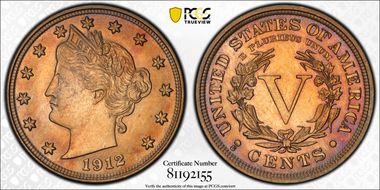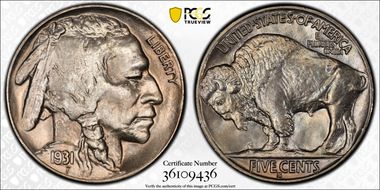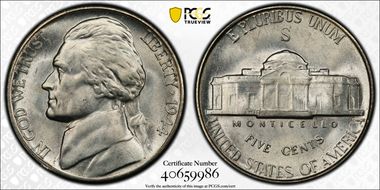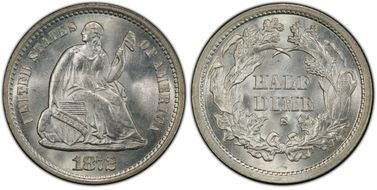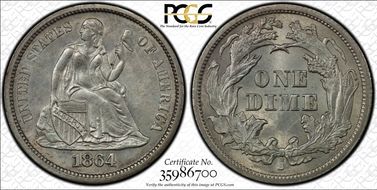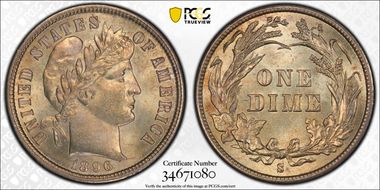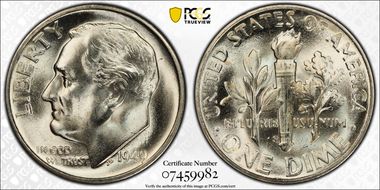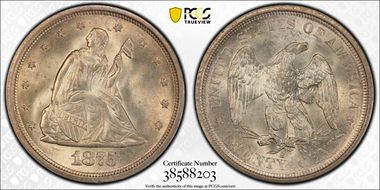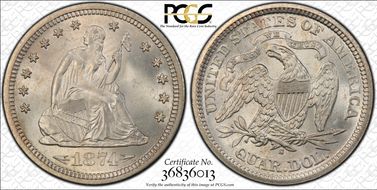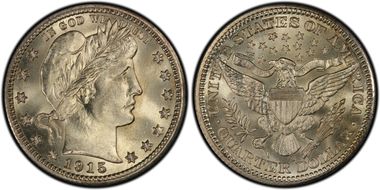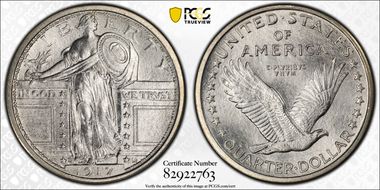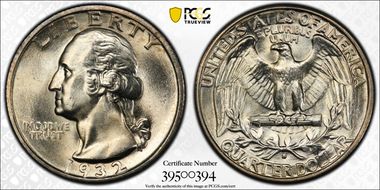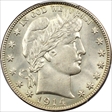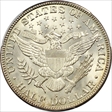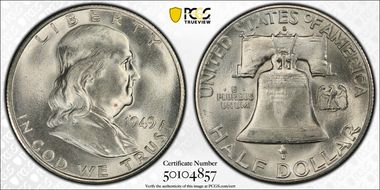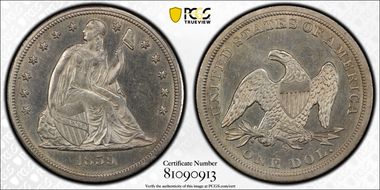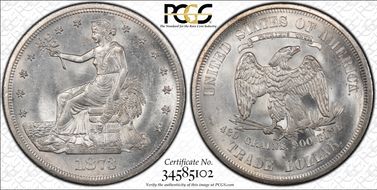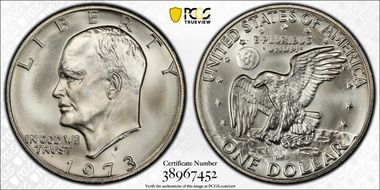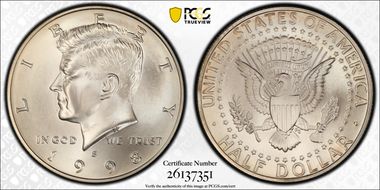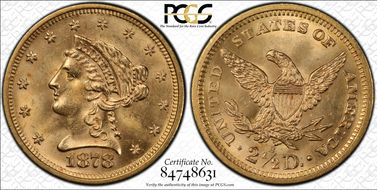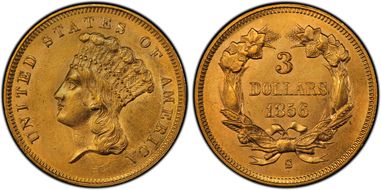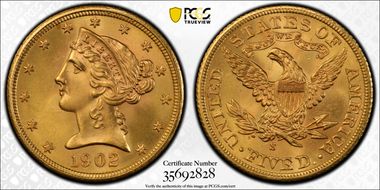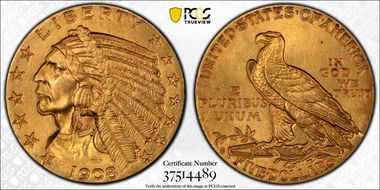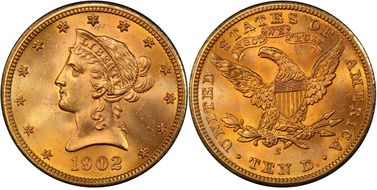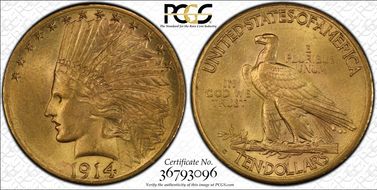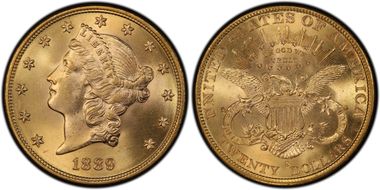Going Thru The Esses 的钱币相册
The 1864-S dime comes from a mintage of 230,000 pieces, which was produced with a single die pair. Most of the mintage circulated and has been lost to attrition. In Mint State, surviving coins are rare. This Choice example displays satiny silver-gray surfaces with a hint of light golden color. All design elements are sharply brought up, and there are no singular surface abrasions.
One of two die pairs of the 1875-S twenty cent piece that earn a place in the Cherrypickers' reference, BF-16 shows the top of a misplaced 7 in the dentils below the primary numeral. On the reverse, the mintmark is boldly repunched. This Premium Gem example is one of the two finest BF-16 coins attributed at PCGS (11/20), and it is conditionally scarce in this grade as a date representative. Only a handful of finer 1875-S twenty cent pieces are reported, all varieties included. This piece is beautifully lustrous and tinted a warm golden hue. Minor strike softness on the obverse stars and Liberty's lap is not bothersome. No major abrasions are seen.
A moderately low mintage of 704,000 coins aided in the limited survival of high-grade representatives of this issue, with Premium Gems being rare. A blush of light champagne toning warms softly frosted surfaces on this well-preserved MS66+ piece, while razor-sharp design definition only adds to the immense visual appeal.
Ex Towers Collection Arrows, Minute S, WB-103, Die Pair 3, R.3. A die chip on Liberty's chest and two other prominent lumps in the middle-left (facing) gown folds confirm the obverse, while the Minute S mintmark is high and left of the feather tip. Die cracks at stars 4, 5, and 8 suggest a late die state. Pleasing gold toning envelops the frosty, sharply struck surfaces and reddish-gold accents visit the borders. Scarce at this grade or any finer.
CAC. Like most issues in the Barber series, the 1914-S half dollar is conditionally scarce in Gem condition and rare any finer. This CAC-endorsed coin displays satiny luster with a hint of champagne toning. The eagle's right (facing) talons and the fletchings are a trifle soft, as usual.
CAC. Like most issues in the Barber series, the 1914-S half dollar is conditionally scarce in Gem condition and rare any finer. This CAC-endorsed coin displays satiny luster with a hint of champagne toning. The eagle's right (facing) talons and the fletchings are a trifle soft, as usual.
Trivial marks are noted on the obverse of this lovely Gem, preventing an even higher grade assessment. Both sides are fully lustrous with brilliant mint frost, and delicate champagne toning enhances the eye appeal. Scarce in this grade and rare finer.
Ex Southern Collection. Lustrous surfaces are virtually untoned, and display sharply struck devices. A few tiny marks are noted on Franklin's portrait.
Fully white with semi reflective fields on both sides. San Francisco and the production of Silver dollars got off to a rough start in 1859. Although there seems have have been an ample supply of silver in that wild Gold Rush city, none had been coined locally into silver dollars. Limited production of dimes, quarters and half dollars had been undertaken in the late 1850s, but no silver dollars. The San Francisco Mint Superintendent Hempstead wrote to Mint Director James Ross Snowden in November if 1858 and requested dies and permission to coin silver dollars. Snowden agreed, and 10 pairs of dies were sent west. These initial San Franscico silver dollars mostly went overseas to China, where they were accepted in trade but most were melted, as the Chinese preferred the Mexican silver coins. None of these 1859-S silver dollars were hoarded and saved when they were released, hence survival is random. Mint State coins are the hardest to find, as most known examples show considerable wear from years of service in commerce. Here is one of the few that did survive with all its mint frost and luster intact. A delight for the date specialist! Only 20,000 struck. Two die varieties are identified for the 1859-S Seated Liberty silver dollar, and this is a late die state of Osborn-Cushing 1, showing a delicate die crack through the base of the date. The 1859-S had a mintage of only 20,000 coins, and survivors are elusive in all grades. Mint State pieces are especially rare. Only 46 submissions have been graded Mint State and both PCGS and NGC, 23 at each grading service, and those figures include countless resubmissions.. This lovely Mint State piece shows striking weakness at the usual locations, including the stars at the upper right obverse, the top of the left (facing) wing, and the eagle's neck. The surfaces are brilliant and untoned, with prooflike fields. This is an outstanding example for an advanced collector.
Ex Vanderbilt Collection. Tied for second FINEST graded! A truly impressive, SUPERB coin! You know it is deserving of its lofty grade. A brilliant luster flashes in the fields, and the sharply struck devices stand out. Only the smallest, most insignificant marks can be detected with a strong glass. The eye appeal is beyond impressive! This very pleasing GEM will delight any advanced Morgan dollar collector.
Ex Sand Hill Collection. A very pretty and CHOICE example of this very scarce date. Only 13,000 were struck and only 175 are estimated to survive in all grades, 20 in all Mint State grades (per PCGS CoinFacts). Well struck up with semi-Prooflike, rich orange-gold surfaces. While the initial look is that of a higher grade, close inspection shows some very minor marks consistent with the assigned grade. Coming from a mintage of 13,000 pieces, the 1860-S gold dollar is scarce, and it is underrated -- particularly in Mint State. This MS63 coin is a rarity, with most Uncirculated coins known residing in MS61 or MS62. The strike is razor-sharp, and each side exhibits rich orange-gold patina with faintly reflective fields. Light contact marks define the grade.
Small S. This is a scarcer variety for the 1856-S three dollar gold piece, which claims a mintage of 34,500 coins. That total is somewhat high in the context of the series but clearly low in the grand scheme of American numismatics. In 2005, Dave Bowers estimated 450 to 575 pieces extant in circulated grades, making the 1856-S fairly collectible. However, only 10 to 15 examples were believed to survive in Mint State, confirming the issue's status as a condition rarity. The present MS61 coin displays full strike definition on the headdress, curls, and wreath, along with, frosty glowing luster around the borders on each side. Orange-gold surfaces exhibit scattered marks and hairlines typical of a coin in this grade.
Despite the low mintage of just 82,000 pieces, a limited number of high-grade Uncirculated examples of the 1908-S survive. This issue was well-produced by the San Francisco Mint, with generally sharp strikes and fewer handling marks than other S-mint half eagles. Eye appeal is above average on most Choice Uncirculated or finer examples. This smooth and lustrous 1908-S displays all of the positive attributes of the issue, with exceptionally few post-mint distractions. Gleaming orange-gold surfaces flash occasional lilac accents, and the strike is crisp on both sides. Scrutiny with a loupe reveals no significant abrasions or marks on the obverse, and just a solitary carbon fleck (pinpoint in size) on the reverse beneath M in AMERICA. Mint luster flows evenly across the fields and devices.




















